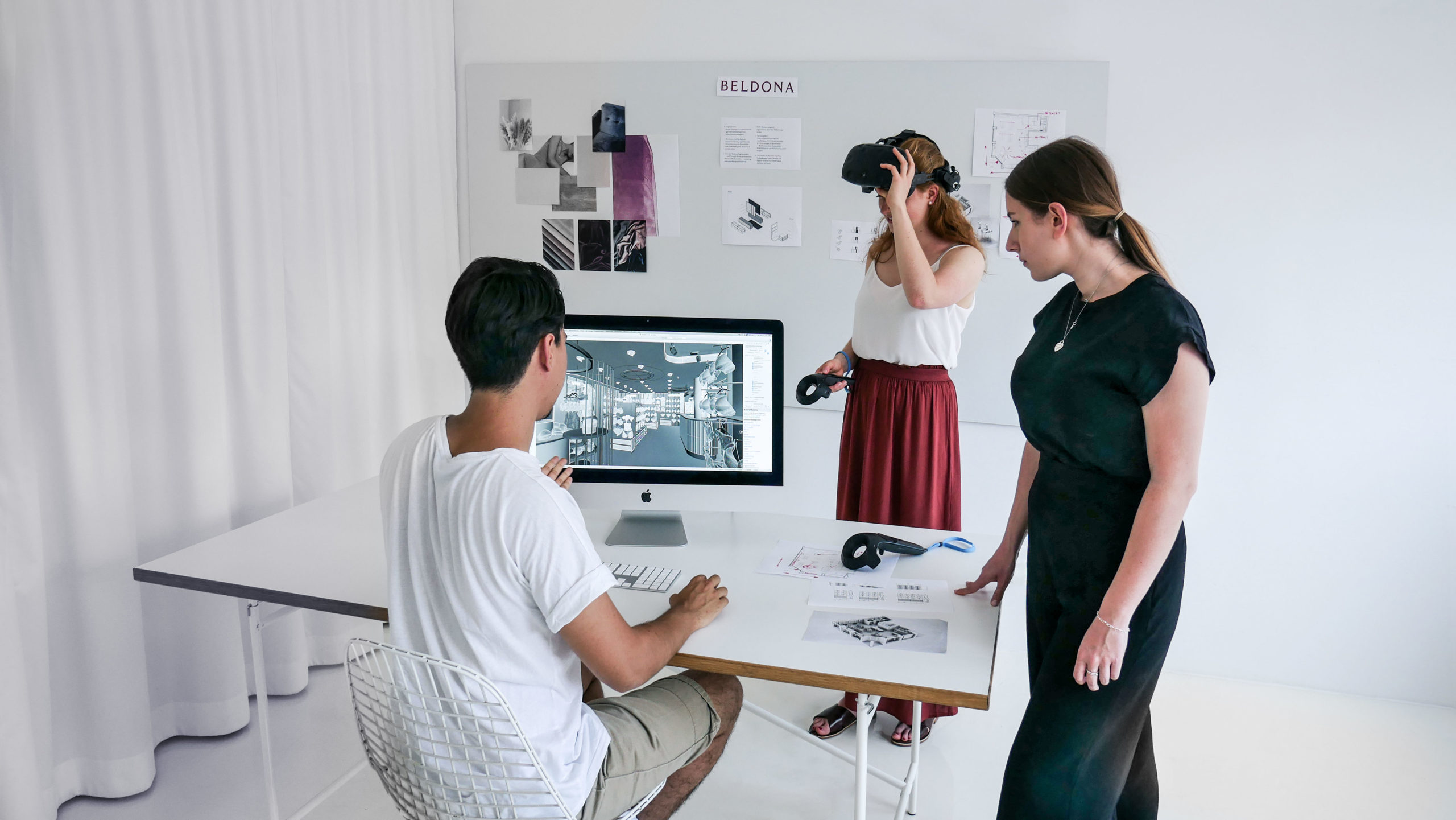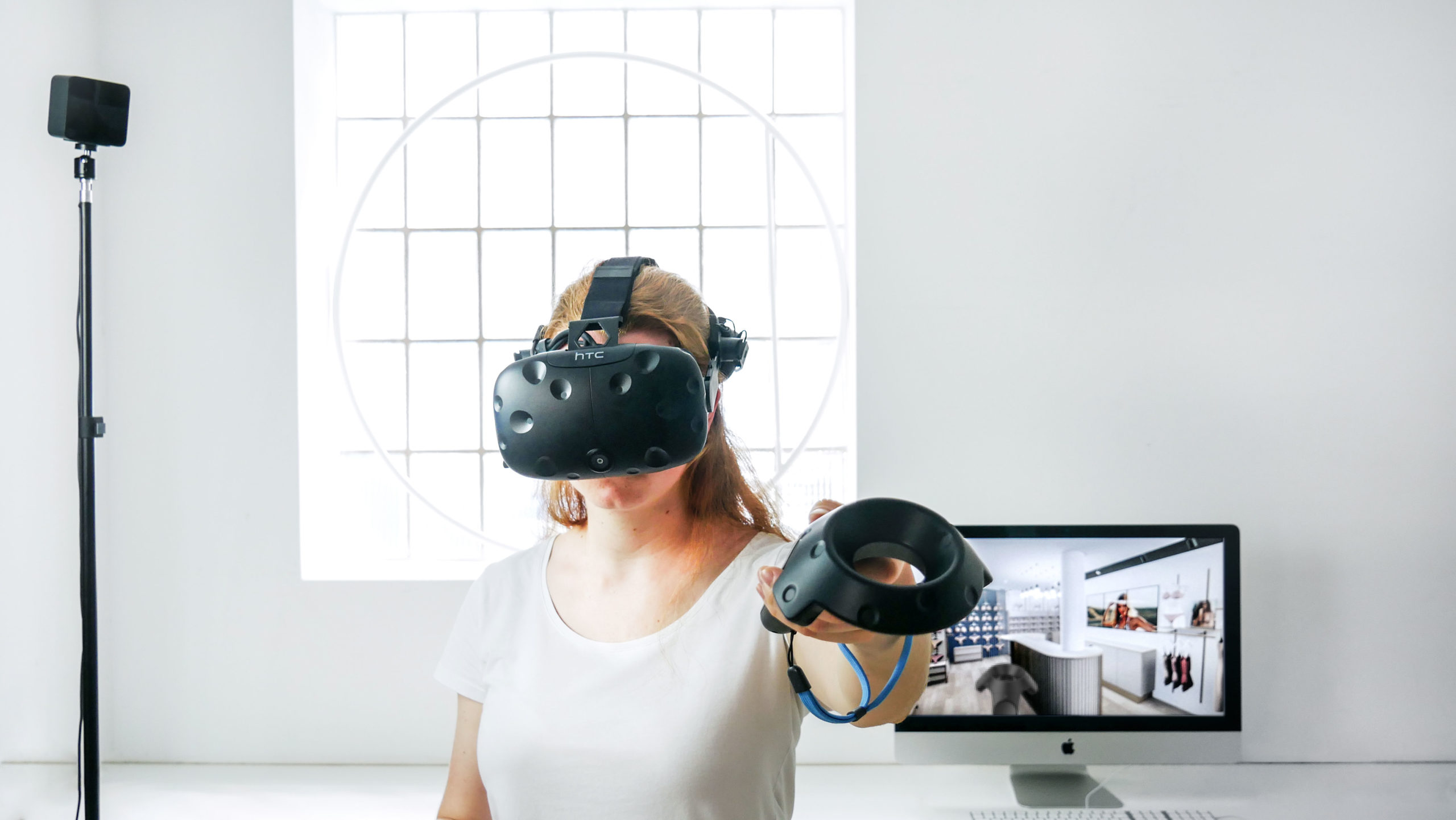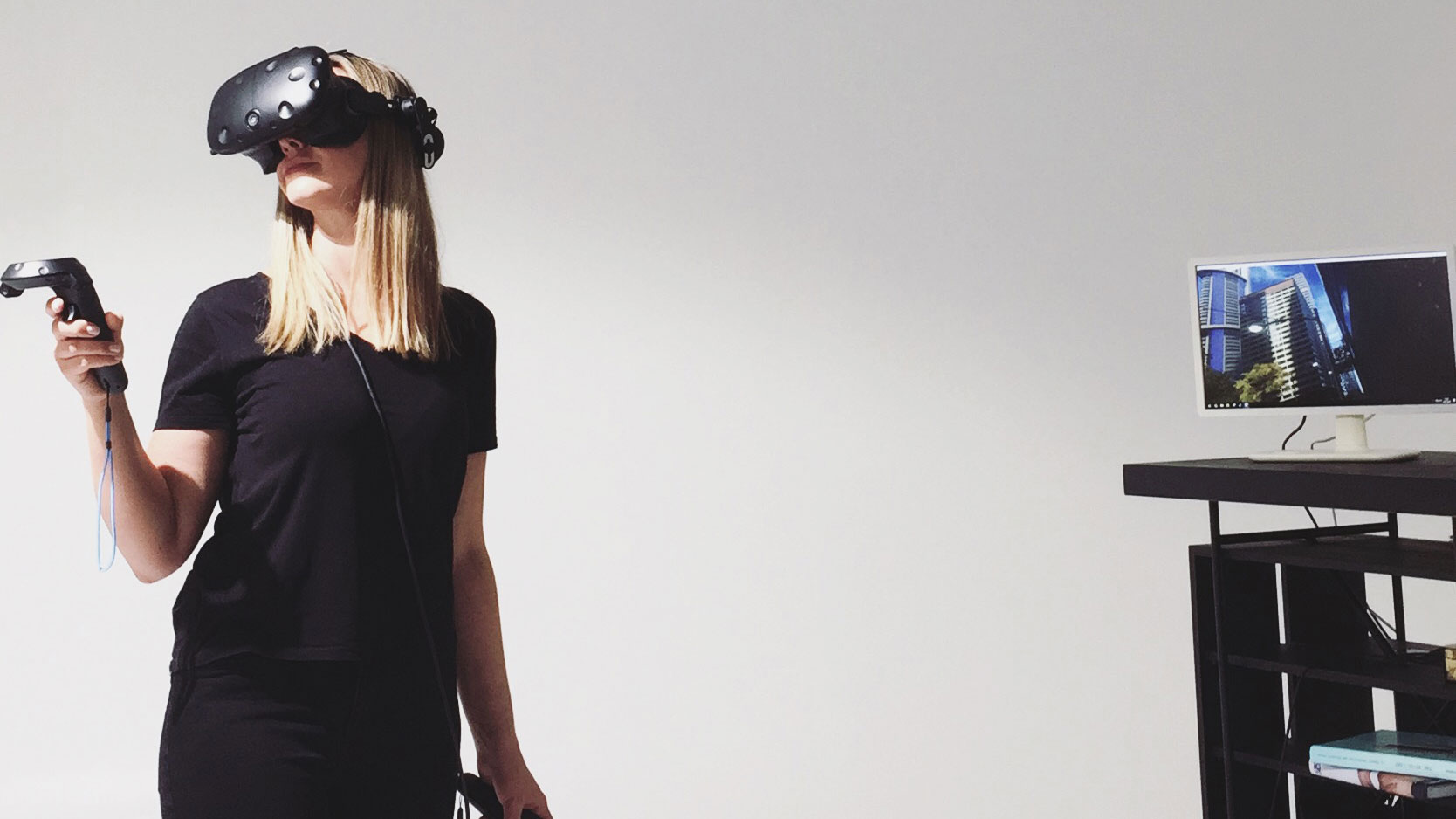Business Relations
T +49 711 664817-119
[email protected]
Virtual Reality. A term that, for many, bespeaks a far distant future or expensive technologies for nerds in ivory towers. Nonetheless, what sounded like science fiction just a few years ago has today simply become science. Virtual reality has arrived in many industries – and also in DFROST’s design labs. Not simply because this is an on-trend topic or so that we can keep our finger on the pulse, but because it is truly relevant for the customers. Because, with the help of programmes placed at their disposal, it is already helping them to immerse themselves in their shop of the future, allowing them to get a close-up feel for their projects from the very first idea. This alone however is not the greatest potential the technology has to offer by far. Other advantages include the possibilities of working with others independent of geographic limitations, boosting efficiency, and cost savings along the entire design process.

Virtual Reality describes the depiction of artificial worlds. Depending on the software and equipment used, it allows an immersion effect to be created in which the illusory surroundings are perceived as real, and where one’s sense of space and time in the real world disappears. The potential this gives rise to is of interest to many sectors apart from the entertainment industry. Architecture and retail design also benefit because it is in these areas in particular that good planning with three-dimensional depiction is crucial. The use of virtual models therefore offers numerous advantages, especially during the conceptualisation phase. This is helpful given that, up to the implementation phase, many customers face the challenge of developing their spatial and atmospheric imagination so that they can understand how form and function will actually work in the real shop. Thanks to VR there are now technical means of avoiding this problem. Because with this technology, both designers and customers can already get a tangible feel for planned projects during the design phase, well ahead of actual construction.

A 360-degree experience that goes far beyond a mere walk through the rooms. It is possible, for instance, to zoom in on details, or inspect the furnishings from every angle. At the same time, all objects are at one’s fingertips; their functionality can be tested and optimised. »Usually it is ergonomic issues, and they can be tested in an entirely different way with VR«, says Christoph Stelzer, DFROST Managing Director and co-founder. Even the lighting conditions at different times of the day or year can be realistically simulated and their coherence checked. One can also experiment with different variants such as surfaces for furniture, walls or floors so that they can be directly sampled and compared with one another. »VR removes spatial boundaries. The customer is no longer looking at a sketch but can stand right in the middle of his project and interact with it«, says the retail expert, explaining one of VR’s advantages. »This kind of advance impression triggers completely different emotions. In fact, it generates real enthusiasm right from the start, and often accelerates the entire process«. The reasons for this acceleration are obvious: planning mistakes and wrong decisions that often lead to delays and significantly increased costs can be identified and remedied early on; misunderstandings or uncertainties can be cleared up immediately. Even questions relating to execution and installation – such as, say, whether large construction elements should be delivered in a single piece or dismantled – can be assessed in advance. Overall, VR can often help to cut the cost of expensive prototypes because architects, designers and customer can directly evaluate the form, look, function and feel on the basis of a virtual model, and jointly decide with the producers what is to be implemented, how and where, at a later point in time. If, despite all efforts, a prototype is still required, naturally enough it is easy to play around with different proportions or materials here, which ultimately leads to even greater planning security and cost savings. And on top of all that, those involved in the project do not even have to be physically together in the same place.

»An enormous win – particularly now that projects are becoming ever more complex, with ever faster cycles and ever shorter completion deadlines being demanded«, says Christoph Stelzer. He is familiar with what can be one of the biggest challenges for any project: fast, straightforward feedback to and from all partners in the team. »Even during the early phases, medium-sized project structures call for any number of specialists who all have to be informed about the connection with the overall project. A further difficulty is that these people often live and work in different places. It is only in the rarest cases that everybody can be simply brought together at one table in a timely manner to discuss conceptual, design-related and technical questions«. The retail specialist therefore sees the greatest advantage of this technology not as its ability to accelerate and optimise design and production processes but rather that it allows individual people to communicate and collaborate with each other in virtual space in real time. Because, even if a good agency curates its customers’ aesthetic wishes, co-creation is seen as elemental at DFROST. Naturally, one can send customers PDFs with planning proposals by e-mail but sketches, renderings or models only go so far when it comes to conveying a realistic impression. And this is where VR comes into play. It closes the gaps between planning and prototype, between prototype and reality – and in an exciting way.
Although VR is still in its infancy, the technology already offers huge opportunities. At the moment, these mainly lie in new ways of working together, or the visual and acoustic impressions it can create which increase the attractiveness of the planning. In a not too distant future however, we can expect that it will also be possible to replicate feel, smell and taste. »We believe that, at latest by then, VR will have the potential to replace conventional planning and presentation in the area of retail architecture. Whatever happens, we are already prepared for that future today.«
Let’s make it happen.
Business Relations
T +49 711 664817-119
[email protected]

This website uses cookies so that we can provide you with the best user experience possible. Cookie information is stored in your browser and performs functions such as recognising you when you return to our website and helping our team to understand which sections of the website you find most interesting and useful.
Strictly Necessary Cookie should be enabled at all times so that we can save your preferences for cookie settings.
If you disable this cookie, we will not be able to save your preferences. This means that every time you visit this website you will need to enable or disable cookies again.
This website uses Google Analytics to collect anonymous information such as the number of visitors to the site, and the most popular pages.
Keeping this cookie enabled helps us to improve our website.
Please enable Strictly Necessary Cookies first so that we can save your preferences!
This website uses the following additional cookies:
- Meta Pixel
Please enable Strictly Necessary Cookies first so that we can save your preferences!